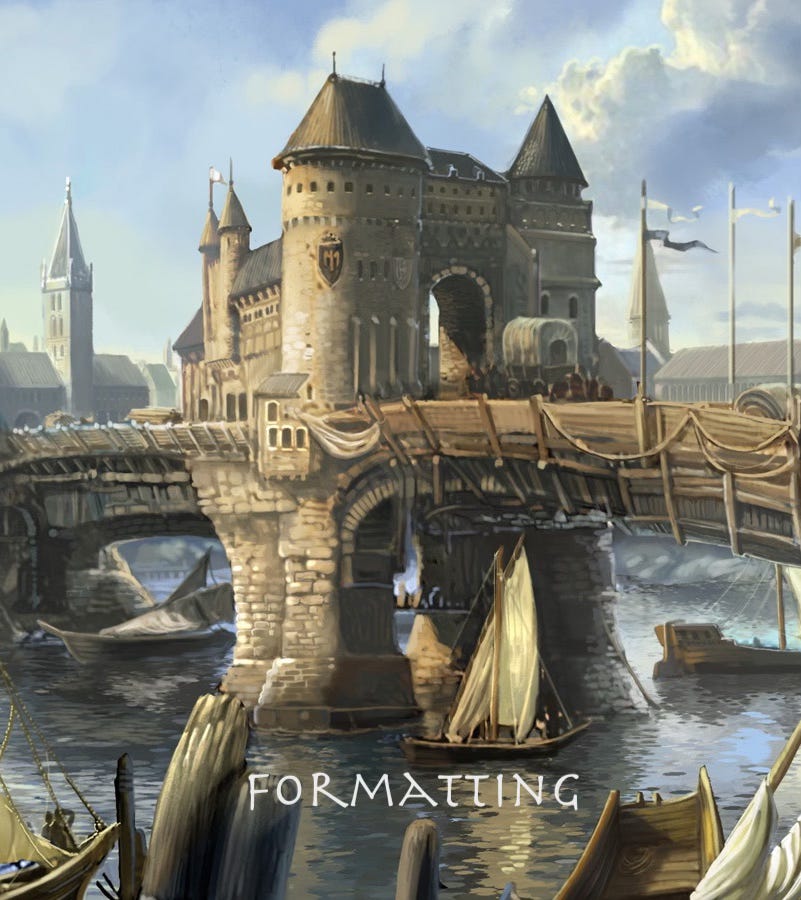Formatting for consistency, audience, and purpose
Introductory post and table of contents for formatting articles

The Short Story
Formatting is a distinctive category of editorial work in that it’s least concerned with the substance of writing. Yet, contrary to popular assumptions, it’s not primarily about aesthetics, either. Above all, formatting ought to be consistent so it doesn’t distract readers from, well, reading. Beyond this “do no harm” principle, consider how each formatting decision could help meet the intended audience’s needs and expectations and otherwise further the author’s purposes.
The Real(ist) Story
On the whole, good formatting is stealthy. If the reader doesn’t notice it, at least not in its discrete components, the formatter probably knew what he or she was doing.
Or you might think of manuscript formatting as the design of the friendly local tavern in your nearest fantasy-medieval town: it should make a favorable overall impression and facilitate, not impede, the adventures of those who step inside.
Formatting, more so than the other categories of editorial work (grammar, punctation, style, phrasing, and so forth) requires an amalgam of principles. It’s mostly an offshoot of style, hence the importance of consistency to avoid distraction. It may also entail concessions to the audience’s needs (in selection of font size, for example) and expectations (for instance, that a new chapter should begin on a new page).
Again, do no harm to the reader with your formatting. If you can do positive good, all the better—and that includes aesthetics, which aren’t unworthy of consideration. Other things being equal, authors and readers prefer books that are pleasing to the eye inside and out. Yet, there’s little point in a book whose pretty-looking font is whimsical verging on illegible.
Below is a list of our current posts on editing for content. Each indexed topic links to an article with practical guidelines and tips.
[coming January 2024]
Godspeed and happy rewriting!


